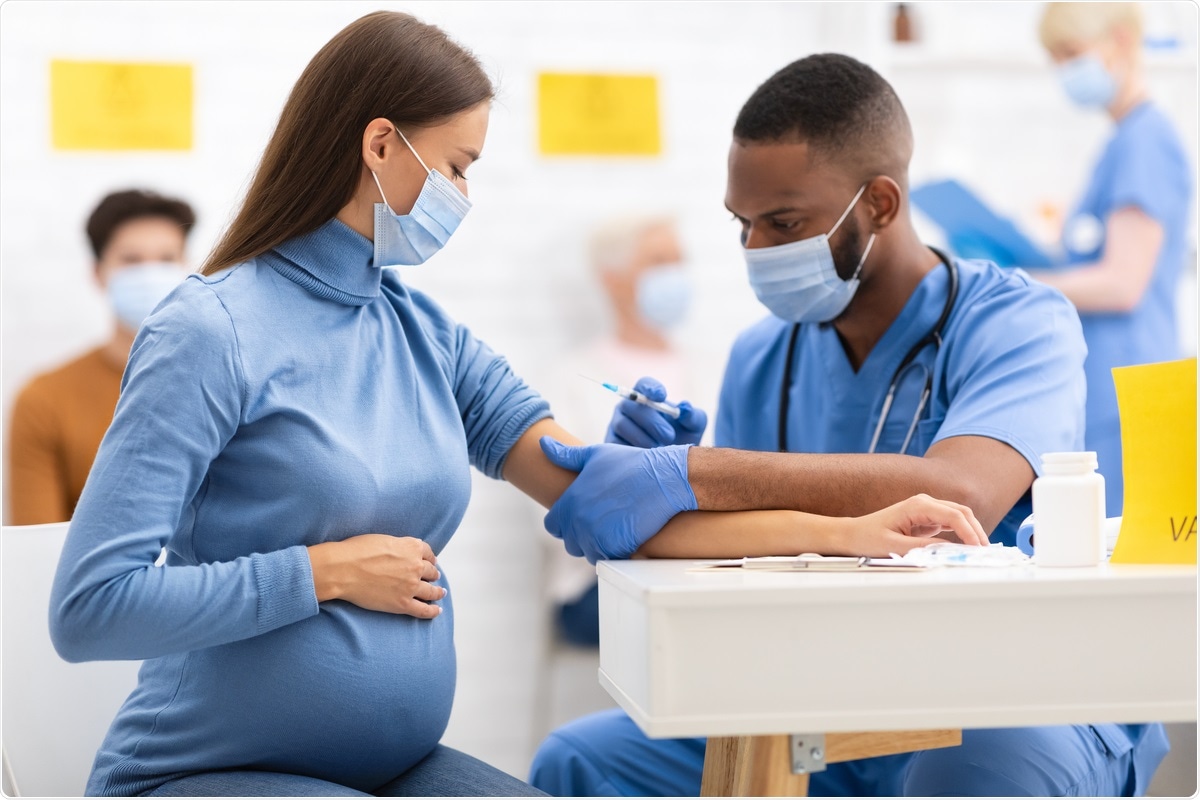Study reports on safety of COVID-19 mRNA vaccines in pregnancy
Researchers used different surveillance systems in the United States to track adverse outcomes after coronavirus disease 2019 (COVID-19) vaccination in pregnant people and found no major safety flags.
In the United States, mRNA vaccines were the first to receive emergency use authorization to combat COVID-19. However, these vaccines were not approved for use in pregnant women as the clinical trial did not include pregnant women, and there is very little data on the safety of the vaccines among pregnant women.
However, pregnant women are more at risk of severe disease compared to the non-pregnant population. There may also be a greater risk of adverse outcomes like preterm birth. Hence, guidelines have been issued that pregnant women should also be given the vaccine. However, these women should be monitored after vaccination to determine safety.

In a study published in The New England Journal of Medicine, researchers report initial findings on the safety of mRNA vaccines in people who are pregnant. They used the “v-safe after vaccination health checker” surveillance system, the v-safe pregnancy register, and the Vaccine Adverse Event Reporting System (VAERS)
Analyzing data on vaccine safety
V-safe is a smartphone-based vaccination surveillance system from the US Centers for Disease Control (CDC) with voluntary enrollment. Links to surveys assessing health status are sent via text message, and follow-up is done for a year after the final dose of the vaccine. Persons who are pregnant are given the option of enrolling in the v-safe pregnancy register.
VAERS is a passive surveillance system started in 1990, and anyone can submit reports to it. Health care providers need to report any adverse events after vaccination and any pregnancy-related complications.
The outcomes from v-safe include any reactions to the Pfizer or Moderna mRNA vaccines. For analyzing pregnancy outcomes, the team used data only for completed pregnancies and included people between 16 to 54 years of age. The outcomes are reported by participants and included pregnancy loss, preterm birth, congenital anomalies, and neonatal death.
The analysis included 35,691 v-safe pregnant participants between December 14, 2020, and February 28, 2021. The majority were between 25 and 34 years old. The most common side-effects reported were fatigue, pain at the injection site, muscle pain, and headache.
Among 827 participants who completed pregnancy, 86% resulted in a live birth, and 12.6% resulted in spontaneous abortion. About 92% of these spontaneous abortions happened before 13 weeks of gestation. About 98% of the live births were reported in persons who received the vaccine in the third trimester. Adverse outcomes in live birth reported were preterm birth, low birth weight, and congenital anomalies.
In the VAERS system, the most common pregnancy-related adverse outcomes were spontaneous abortion, stillbirth, and premature membrane rupture. No congenital anomalies were reported.
No obvious safety flags
The data indicates that in the United States, some pregnant people are electing to get vaccinated against COVID-19. The reported adverse reactions were similar among pregnant and non-pregnant persons. The proportion of adverse pregnancy outcomes among vaccinated individuals is similar to outcomes in the general population before COVID-19.
The comparisons made here give only a rough sense of any unexpected safety outcomes in vaccinated pregnant people, as there could be differences based on several demographic and socio-economic factors. The sample size is still very small, and the findings may change as more data becomes available. Congenital anomalies because of vaccination early in pregnancy could not be evaluated as no such people have had live births yet.
Since VAERS is a passive surveillance system, there is likely underreporting of adverse pregnancy and neonatal events, despite mandatory reporting requirements. Miscarriage was the most common pregnancy-related outcome reported on VAERS after the COVID-19 vaccination. This is similar to the observations during the 2009 H1N1 swine flu pandemic after vaccination.
There is some evidence of antibodies being transferred to the baby in the womb when the COVID-19 vaccination is done in the third trimester. However, the antibody level and the amount of protection it offers to the unborn baby are still unknown.
Early data from the v-safe surveillance system, the v-safe pregnancy registry, and the VAERS do not indicate any obvious safety signals with respect to pregnancy or neonatal outcomes associated with Covid-19 vaccination in the third trimester of pregnancy,” the authors write.
However, continued monitoring is necessary to further understand any risks.
- Shimabukuro T. T. et al. (2021) Preliminary Findings of mRNA Covid-19 Vaccine Safety in Pregnant Persons. The New England Journal of Medicine. https://doi.org/10.1056/NEJMoa2104983, https://www.nejm.org/doi/10.1056/NEJMoa2104983
Posted in: Medical Science News | Medical Research News | Miscellaneous News | Women's Health News | Disease/Infection News | Healthcare News | Pharmaceutical News
Tags: Abortion, Antibodies, Antibody, Baby, Birth Weight, Clinical Trial, Coronavirus, Coronavirus Disease COVID-19, Fatigue, Flu, H1N1, Headache, Health Care, Medicine, Miscarriage, Muscle, Pain, Pandemic, Pregnancy, SARS-CoV-2, Stillbirth, Swine Flu, Vaccine, Womb

Written by
Lakshmi Supriya
Lakshmi Supriya got her BSc in Industrial Chemistry from IIT Kharagpur (India) and a Ph.D. in Polymer Science and Engineering from Virginia Tech (USA).
Source: Read Full Article
